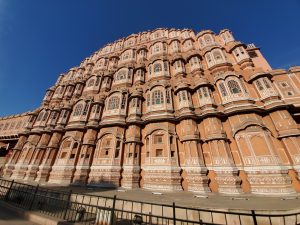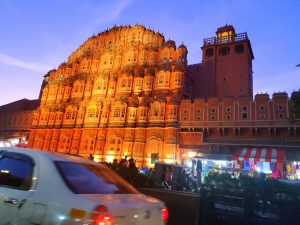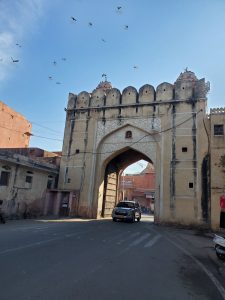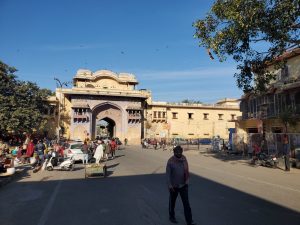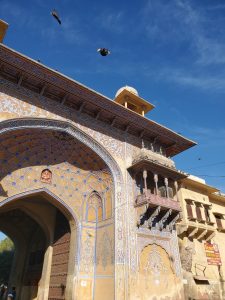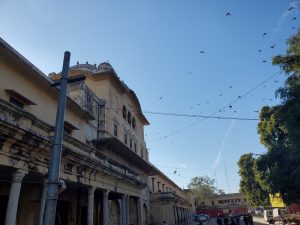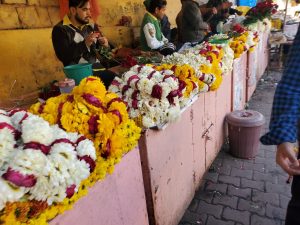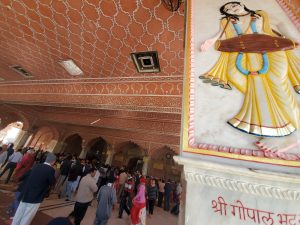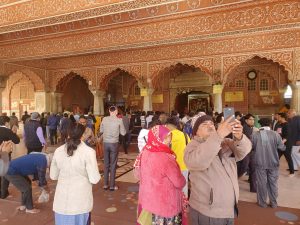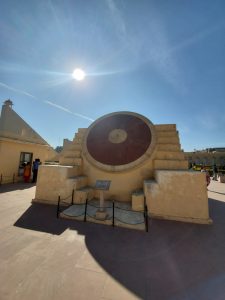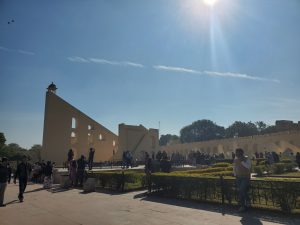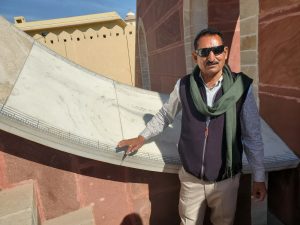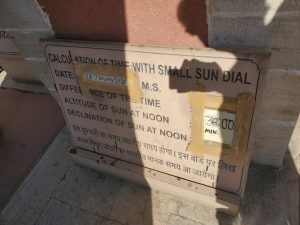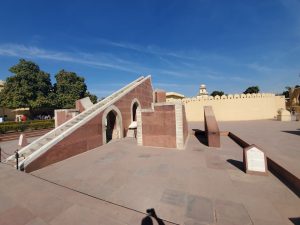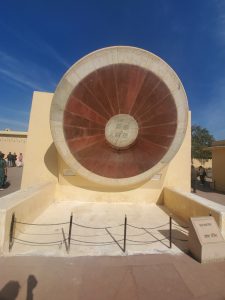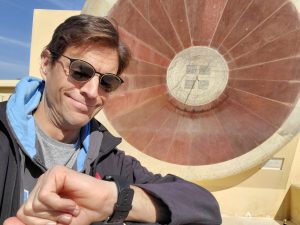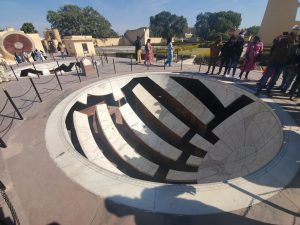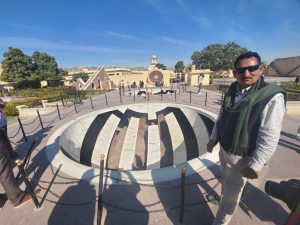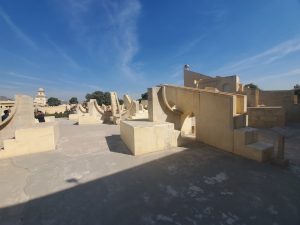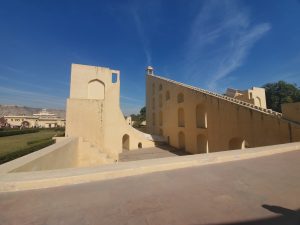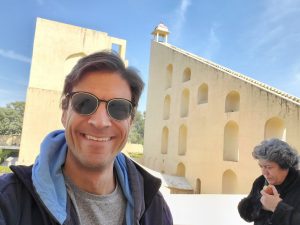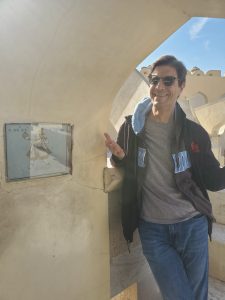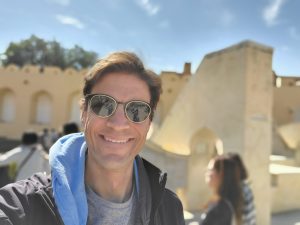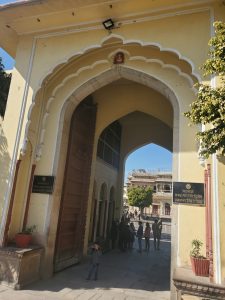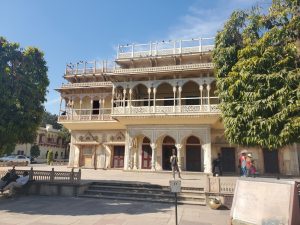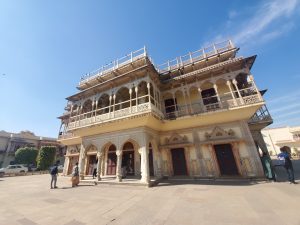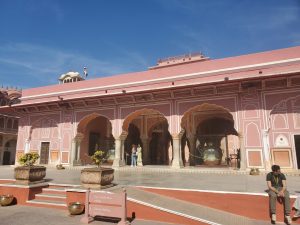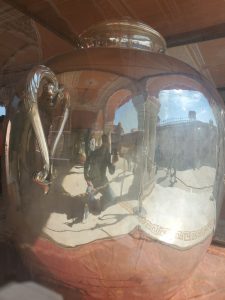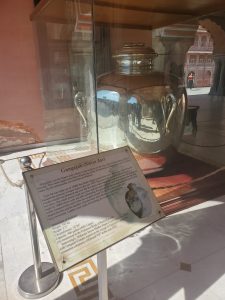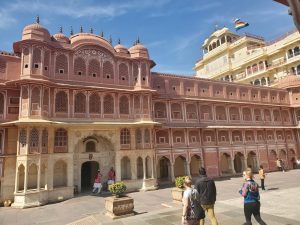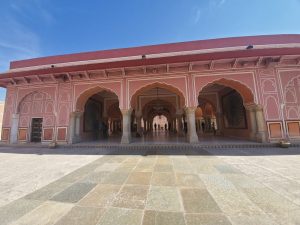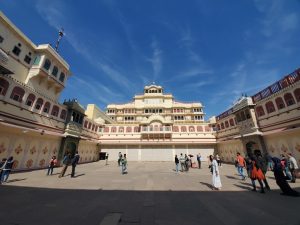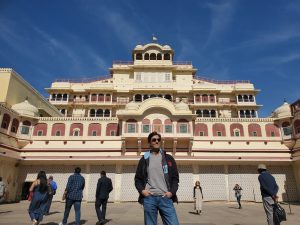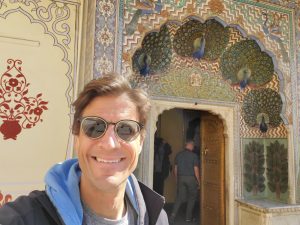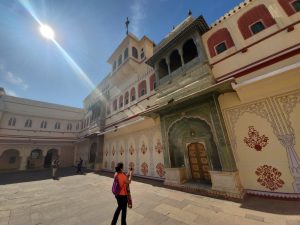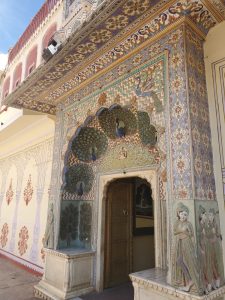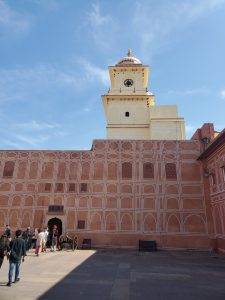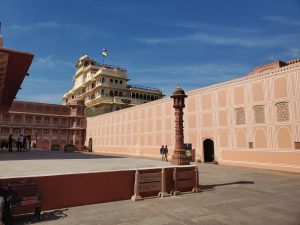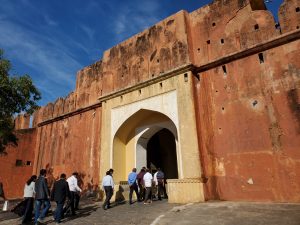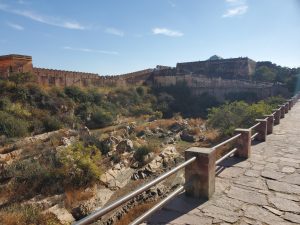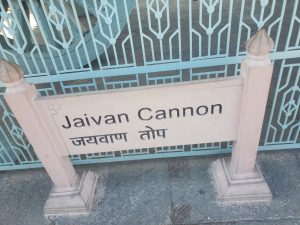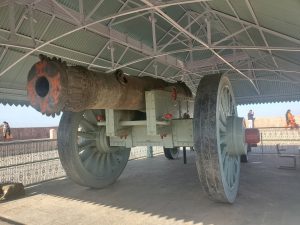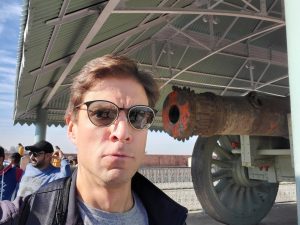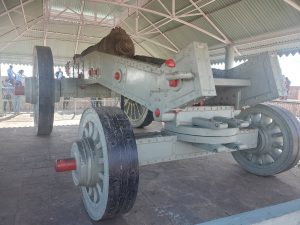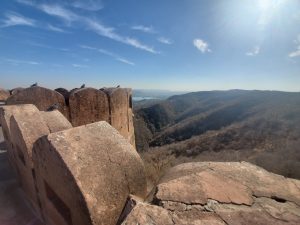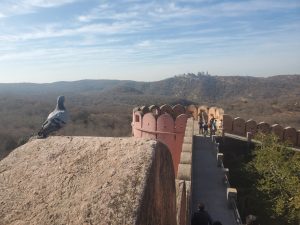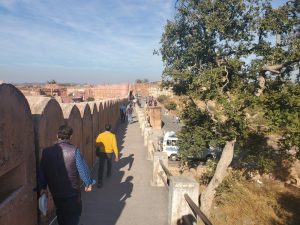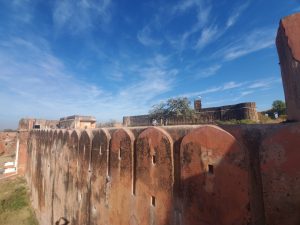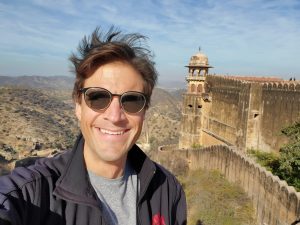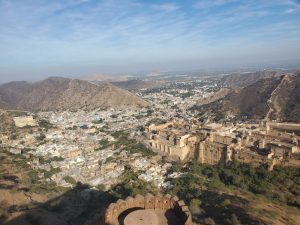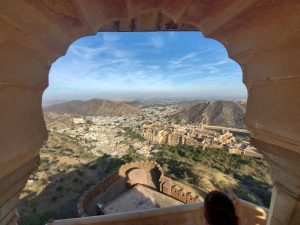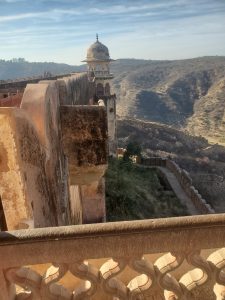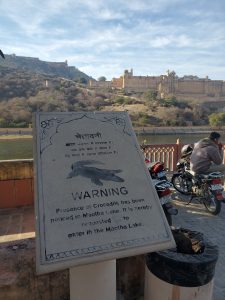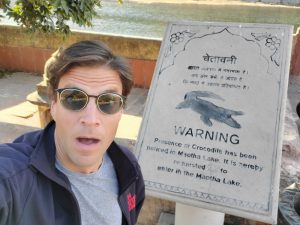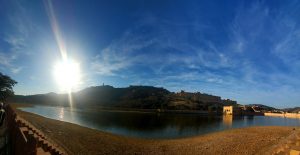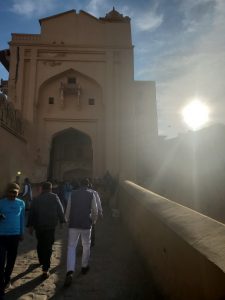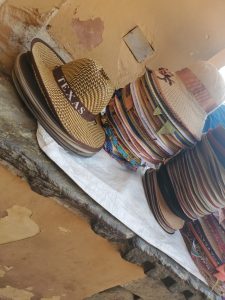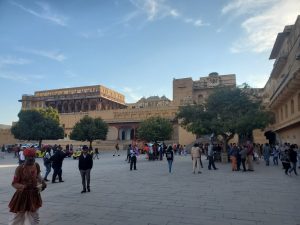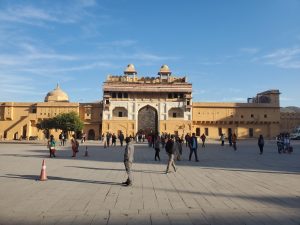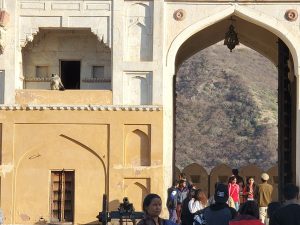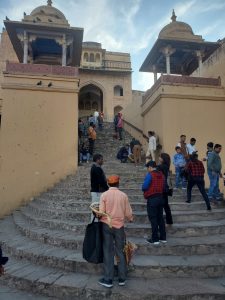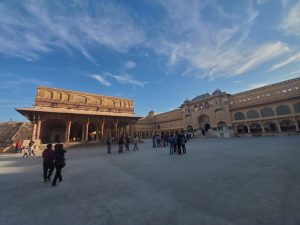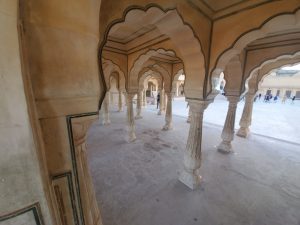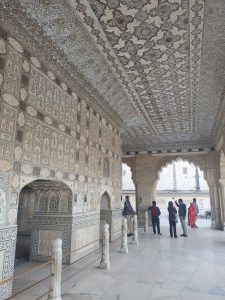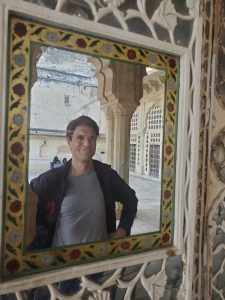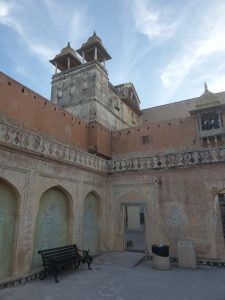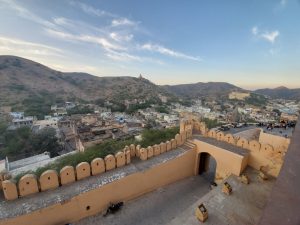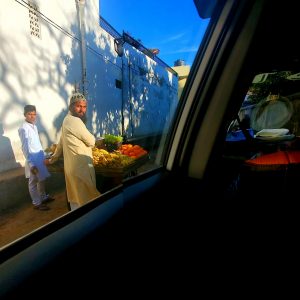Ajay is our tour guide for the day; we speed-see the sights and he speed-teaches us hundreds of years of Indian history. A lot of it washes over me and I fail to take notes like I mean to, just trying to absorb it all like a member of the phylum Porifera… aka a sponge.
It was such a long day that I didn’t even write a contemporaneous entry. This is being drafted somewhere in the jetlag haze of the day or two after I returned to the US.
As a result, I figure this one might best be done as a photo album post — “How I Spent My Day in Jaipur.”
- Hawa Mahal (translated as The Wind Palace) in the Pink City — Photos showing Day and Night, Night and Day — we saw this at the beginning of the tour on foot and at the tour from the car window. This is actually the back side of the palace and was built in a sort of honeycomb structure with oodles of windows. This was so that the noble ladies could watch the goings on in the street without being seen, as the rule was they couldn’t appear in public without veils/coverings.
- The Jaipur City Palace – it’s sprawling, with couryards, chambers, buildings, temples, a bit of everything. Construction began with the founding of Jaipur in the early 1700s.
* A Hindu Temple – Ajay wanted us to see this particular temple as according to him they follow the rules of Hinduism quite well… in that there aren’t any specific rites/rules. The theory is that religion is a means to communicate with God, that how one chooses to interact and address God is personal and cannot be contained by set rituals or practices. Some may chant, some may speak to friends, some may prostrate themselves, some may serve to help others or their country — the point, Ajay, said, was that it’s a religion of the individual seeking self-actualization and that each self determines what path that may be best for him or her; it is not dictated by others.
- The Jantar Mantar or the Jaipur Observatory is a collection of nineteen architectural astronomical instruments built by the Kachwaha Rajput king Sawai Jai Singh II, the founder of Jaipur. It features the world’s largest stone sundial and has various means for reading time and celestial coordinates. King Sawai Jai Singh II was, if you pardon the European phrasing, a true renaissance man, interested in the betterment of his people and the world through knowledge and understanding.
Ajay arranged for a specific guide to show us around and demonstrate how things worked — which was incredibly useful as otherwise I would have just thought the place was a giant sculpture park. Even with his explanations, I couldn’t tell the time but it made sense when he did it. He also gave me an astrological reading based upon my birthdate and time. It felt like he was right about me… but he might have just done a cold reading, like The Mentalist. I never know how much to believe in these things… especially given the death notice the psychic gave me in Myanmar a few years back.
- The City Palace and Its Museum – we returned to amble through the museum proper of the City Palace.
Amongst the artifacts — the Gangajali or giant water jugs Maharaja Sawai Madho Singh II took with him to England in 1901 for the coronation of Edward VII. He didn’t trust their water in England and only would drink water from the Ganges River, hence these literally named “Ganges Water Urns.”
- The City Palace Courtyard and Clock Tower
- Jaigarh Fort up on the blustery Cheel ka Teela (Hill of Eagles) features the Jaivana Cannon, an 18th century behemoth that could fire great distances and with huge cannon balls. It was test fired only once to prove a point and was a massive deterrent for would-be invaders.
- A view of Jaigarh Fort from down below… with special guests
- Amber Fort, which was an English-ized bastardization of the local name for the place — it’s not pronounced Amber; it’s actually pronounced “A-Mare.”
On the drive back, we passed this guy pushing a fruit cart. Had this been a movie, we would have crashed into him. Because this was India, we only just barely missed him. I mean, it was millimeters. They do cut things close on the roads here. After several days without incident, I saw three accidents occur within a space of 48 hours… but to be fair, none of them involved a fruit cart.

